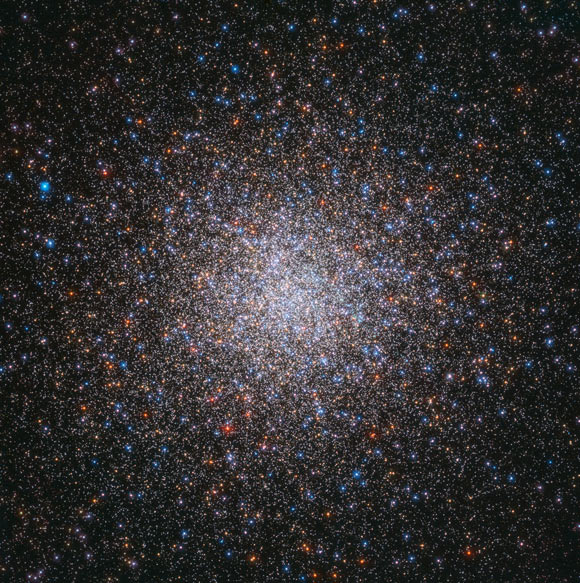NASA has released a stunning image snapped by the agency’s Hubble Space Telescope of the globular cluster Messier 2.

This image from the NASA/ESA Hubble Space Telescope shows a globular cluster called Messier 2. The image is made up of observations from Hubble’s Wide Field Camera 3 (WFC3) in the ultraviolet and optical parts of the spectrum. It is based on data obtained through three filters. The color results from assigning different hues to each monochromatic image associated with an individual filter. Image credit: NASA / ESA / Hubble / G. Piotto et al.
Globular clusters are spherical groups of ancient stars that are bound together by their mutual gravitational attraction.
Messier 2 is one of about 170 globular clusters known in the Milky Way.
Also known as M2 or NGC 7089, it was discovered in 1746 by the French astronomer Giovanni Domenico (Jean-Dominique) Maraldi while he was observing a comet.
Messier 2 is located in the constellation of Aquarius, approximately 55,000 light-years away.
The cluster has a diameter of roughly 175 light-years and is one of the largest of its kind.
With an estimated age of 13 billion years, Messier 2 is one of the oldest globular clusters associated with our Galaxy.
It contains over 150,000 stars, including 21 known variable stars.
Most of the cluster’s mass is concentrated at its center, with shimmering streams of stars extending outward into space.
It has an apparent magnitude of 6.3 and is bright enough that it can even be seen with the naked eye when observing conditions are extremely good.







